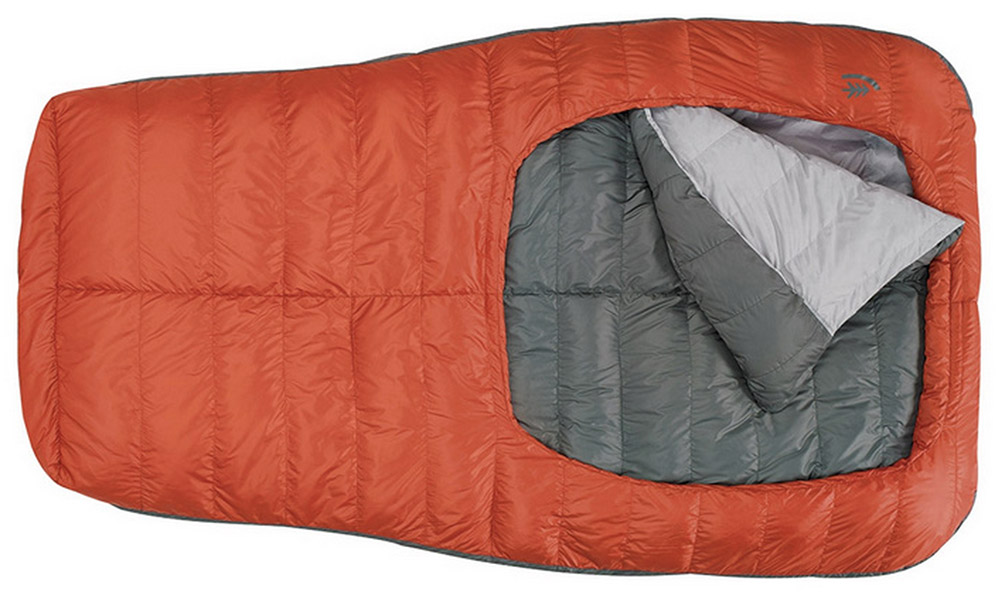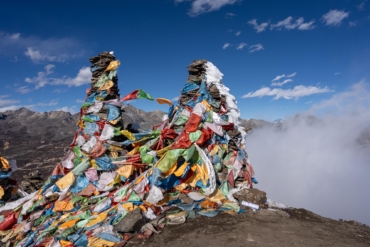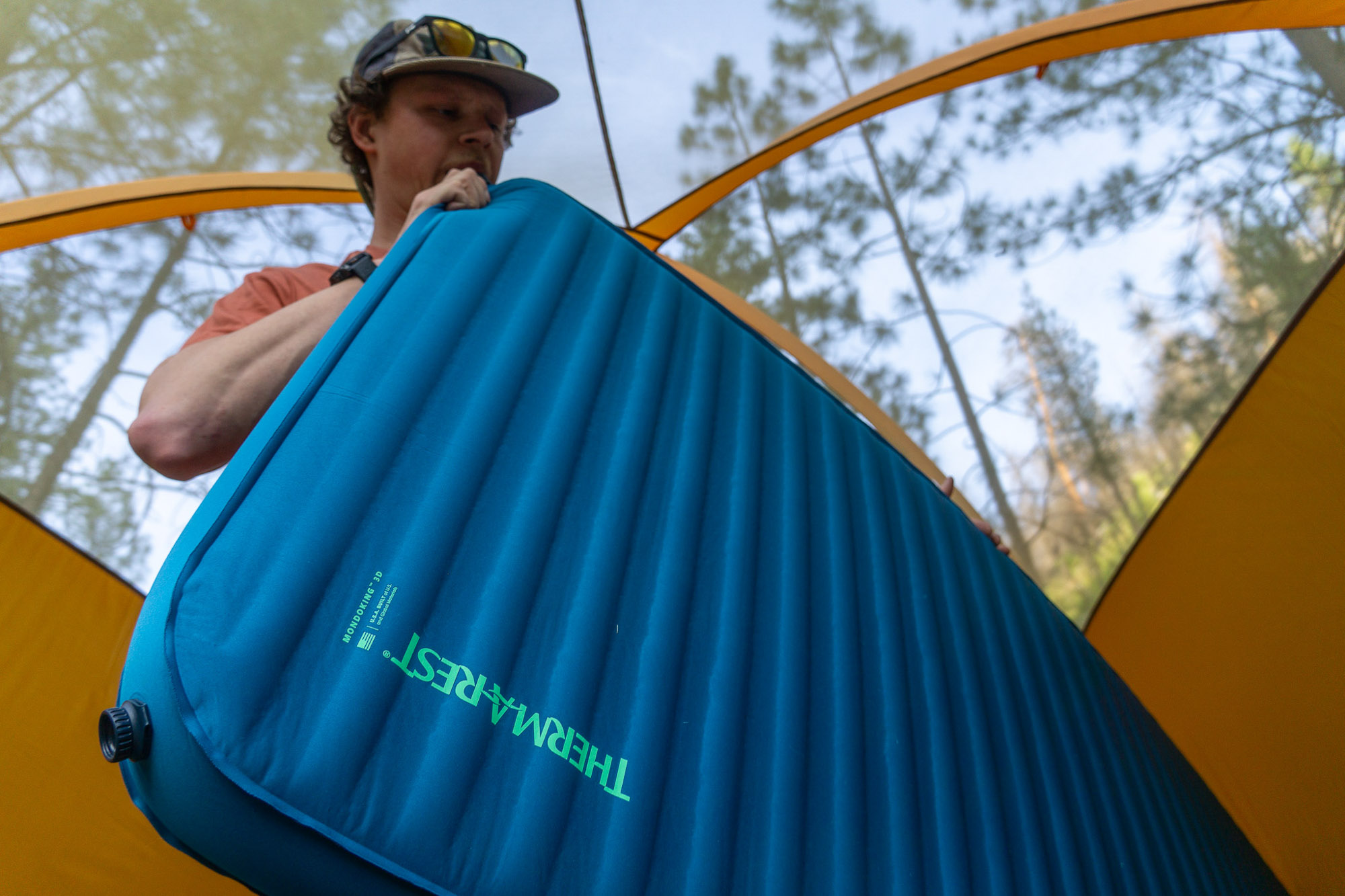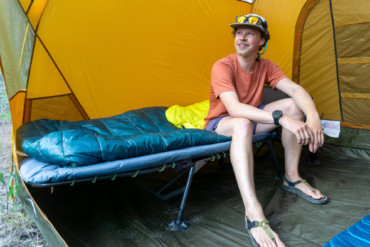By all standards, my proposal was pretty ridiculous: Spend 5 days on a sheet of ice, tethered together with a 30-meter rope, and spend each night together in ONE sleeping bag to maximize warmth.

We would suffer nights in a tent the size of a card table, and we’d spoon for warmth under a single quilt. Thus are the sacrifices one pays to stay fast and light.
To pinch on space and capitalize on body heat, I proposed that we share Sierra Designs’ Backcountry Bed Duo on our ski trip around Rainier. (See my full trip report, “High Orbit On Rainier.“)
Ditch The Sleeping Bag
Groundbreaking in its design, and loved by users and reviewers alike, the original Backcountry Bed strikes a balance between comfort and warmth. Could the Duo cut it on the mountain?
In my original text to propose the “one bag” concept I wrote, “You carry the tent, I’ll carry the bag.” My climbing partner’s response: ?
The Gear: Sierra Designs Backcountry Bed Duo DriDown (tested). A synthetic version is available.
Price: 600-fill DriDown (hydrophobic treated down), $500; synthetic version, $250
On Sale Now: 25% off for the rest of 2015.
Who’s It For: People who love the comfort of a quilt and want to share a bed with their partner. Use it family camping, car camping, or backpacking with a partner.

Basics: The Backcountry Bed is offered in two versions, a 30-degree DriDown and the 40-degree synthetic. The down version weighs just under 4 pounds (the synthetic bed is a few ounces heavier).
The oversize top comforter is sewn into the bottom of the sardine-can like opening. To get in, you slip into the bag from the top and pull the comforter up around your chin and tuck it around you. Since there’s no zipper, you vent excess heat by either peeling back the comforter or sticking your feet out the large foot vent under the bag.
Two pads can slip into two independent sleeves on the underside. The 20-inch sleeves are gusseted and can unbutton to swallow up bigger pads if needed.
The down bag uses nano-treated DriDown, protecting the insulation from moisture (the achilles heel of traditional down bags). The comforter includes hand/arm pockets to keep the digits tucked and warm.
Nailed It! The Bed is really comfortable, and while we didn’t need them on Rainier, I loved that you could stick your feet out the bottom of the bag to cool down.
We felt we really pushed the limits of the down on Rainier; the DriDown held its own after five days of sweat, snow and spilled soup. It did not overly clump or lose its loft, staying warm for the whole trip.
The mattress sleeves keep the pad where you need it; right below you. Tip: use rectangular pads instead of contoured style pads, as the boxy shape stays put better.

Don’t Try This At Home (And Other Issues). There’s no getting around it; Rainier’s Camp Muir structure is a miserable icebox — much colder than sleeping in a tent. We camped there the first night. The cement bricks quickly sucked any heat we may have generated and left us shivering through the night which dipped as low as 10 degrees outside.
Wearing everything to bed, we quickly noticed that the large gap between us spilled valuable heat out of the bag. My partner resorted to throwing an arm over the gap to pinch it shut. Rainier was pretty extreme, but I imagine this could also be an issue at more moderate elevations.
Weighing in at 3lb 15oz, the Duo is only a few ounces heavier than the 3-season single Backcountry Bed. But it’s still about as heavy as a full winter bag, and it fills about as much space in the pack, too.

Sharing a bag dedicates the Duo to one person’s pack. In our case, the other carried the tent and rope–an equitable trade. If your future plans include backpacking, you’ll want to invest in an aftermarket compression sack to cinch this bag down. I used Sea To Summit’s Air Stream Dry Sack Pump, a 20L dry bag that compresses through a roll-top on one side and a one-way valve on the other, pushing out as much air as possible.
Because it’s so bulky, I would have liked to see a higher down fill used to reduce the mass (though at $500 for 600-fill, it would likely price most buyers out of the bag).
Lastly, the Duo is a lot of bag; we found it sort of kludgy to manipulate and set up with the pads. This is a roomy, comfortable place to sleep, not a trim mountaineers’ mummy.

Made in: China.
Who Should Buy It: If you or your partner turn a lot at night, the Backcountry Bed Duo offers a lot of space to kick around. It’s easy to get in and out of, making midnight elimination runs a pretty easy task (no wrestling with zippers). The non-constricting design offers a great option for increased sleeping comfort; it’s truly more like a bed (as per its name) than a regular, zipper-equipped sleeping bag.
Parting Thoughts: Rainier pushed the limits of the Backcountry Bed Duo. While its creative design brought “just like-home” perks, it left a large gap between our sleeping bodies that we felt spilled too much heat before it could get trapped in the bag’s loft. This could be fixed if Sierra Designs draped a draft-tube from the comforter’s top.
Would we bring the Duo again on this kind of trip? We felt a single bag (each) could provide a more streamlined fit at less weight and bulk, and hence conserve heat better. And if you are on a budget, a single bag is less specialized and gives you more options for when you go it alone. But if the conditions were closer to the limits of the bag (i.e., not full winter conditions), then we would choose this setup again.
Contact Brand/More Beta: Sierra Designs







